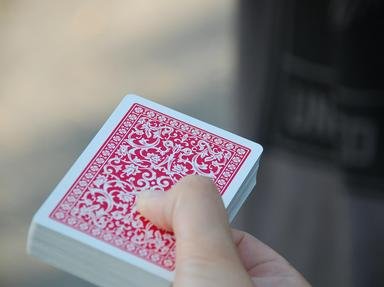Quiz Answer Key and Fun Facts
1. Which player is the opening leader in contract bridge?
2. After the opening leader plays her card the player to her left chooses a card from his hand and plays it.
3. Once the leader plays a card, what are the other players required to do, if able?
4. After the first trick, who is the leader for each subsequent trick?
5. If the declarer leads from the wrong hand, which defender can accept the lead?
6. If a defender thinks she is the leader and plays a card and it's her partner's turn, declarer has several options. Which of these is not one of them?
7. One common convention is for the opening leader to lead the fourth highest card in their longest and strongest suit. When this is done, how many cards higher than the one that was led do the other three players hold in that suit?
8. When the leader on defense is playing a suit where she holds exactly two cards, she should play the higher one first.
9. When the leader has three small cards in the suit she is leading from, one lead convention is called MUD. If you are playing MUD, which card should you lead?
10. The auction goes 1NT-Pass-3NT-All Pass. You are the opening leader and your hand is S-KQJ94, H-K83, D-K65, C-72. Which of the following cards is your best lead?
Source: Author
andymuenz
This quiz was reviewed by FunTrivia editor
WesleyCrusher before going online.
Any errors found in FunTrivia content are routinely corrected through our feedback system.
